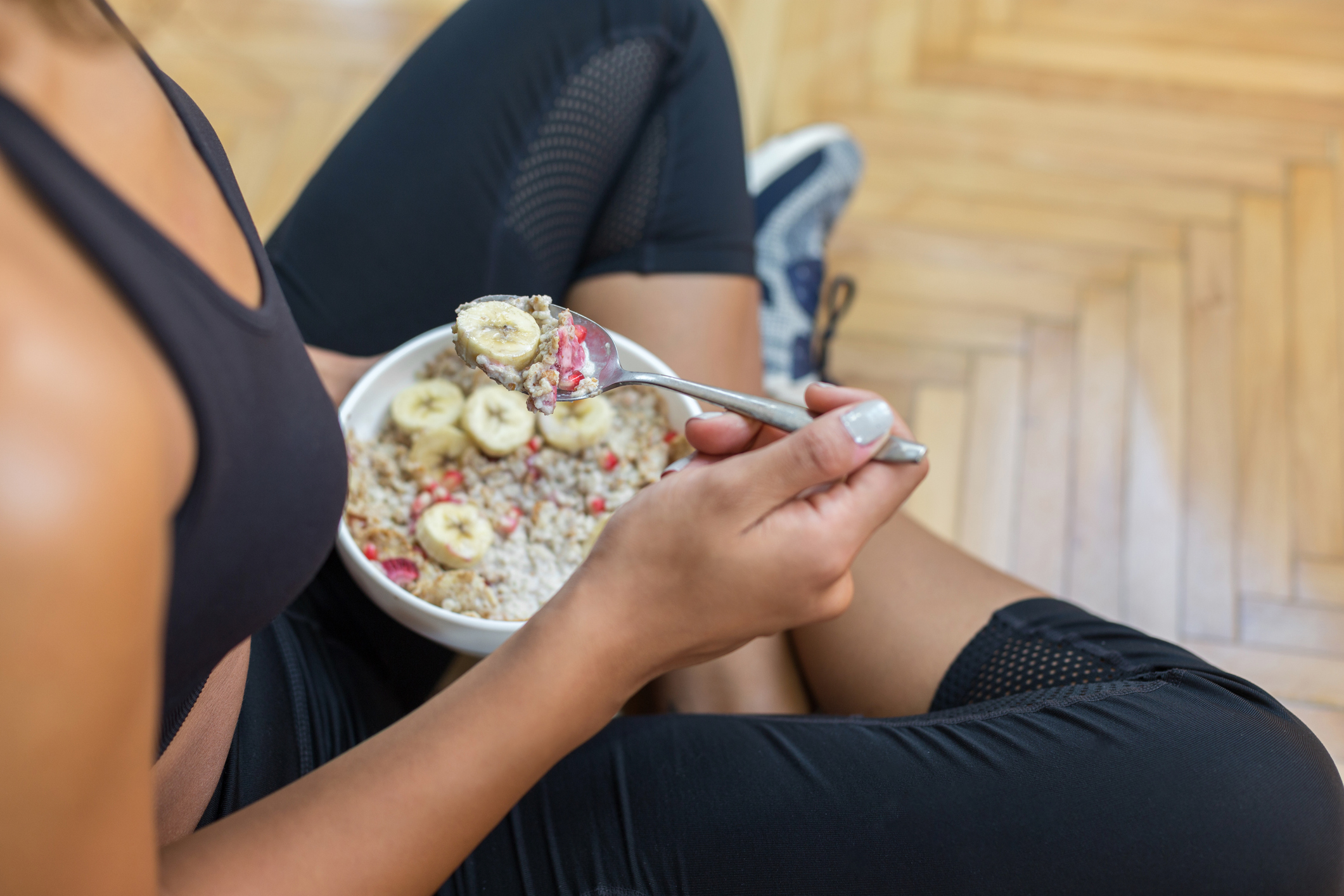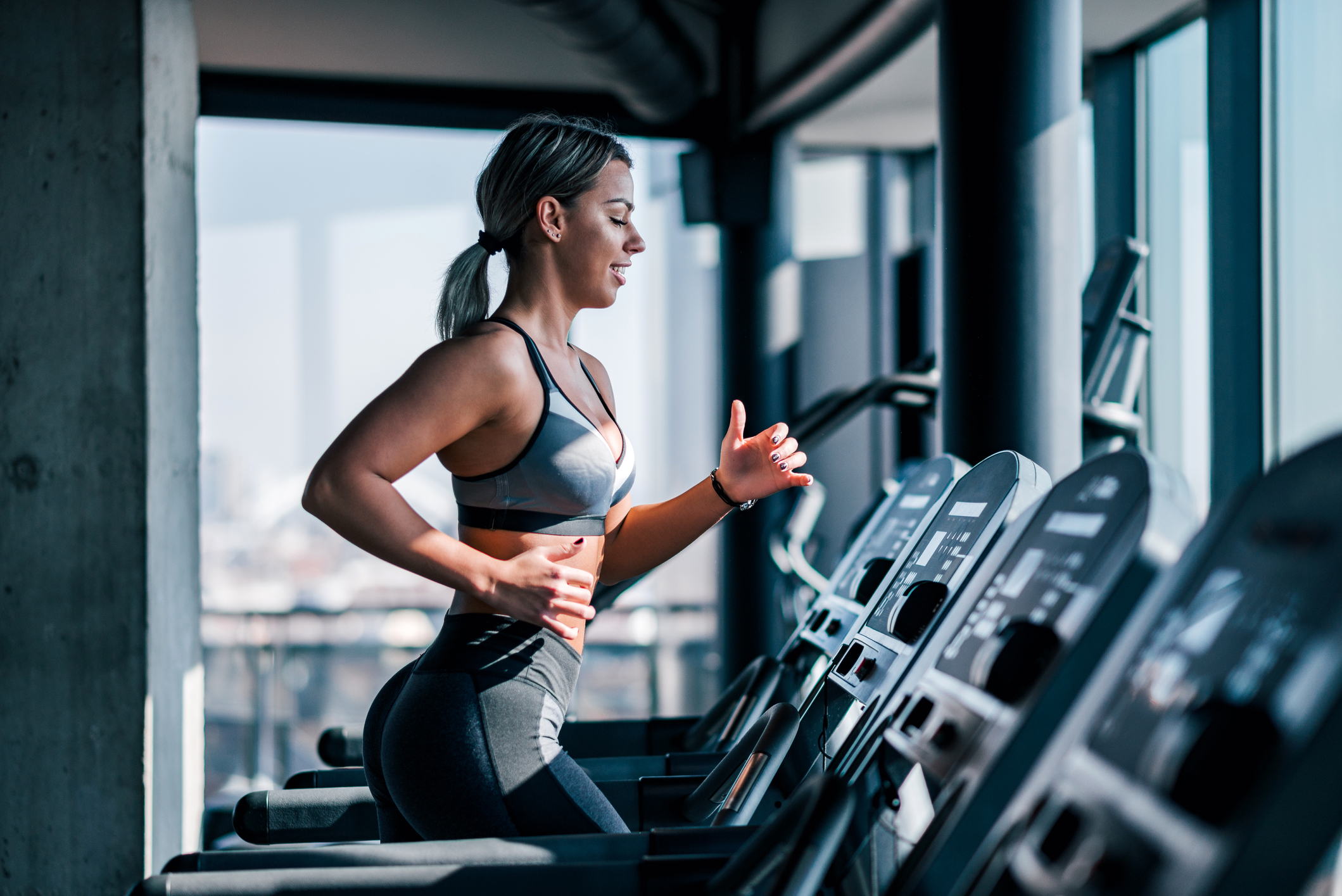
That's delayed onset muscle soreness, FYI.
Ever heard of delayed onset muscle soreness?
If you haven't, you may have felt it. You know that stiff, achy soreness you sometimes get in your legs post-workout? Yep - that's delayed onset muscle soreness, otherwise known as DOMs.
You're not the only one who isn't sure exactly what they are, as Google searches for whether it's safe to train with DOMS increasing by 89% year on year, with searches on how to recover from sore muscles up by 50% year on year.
You'll likely notice DOMs if you've recently ramped up the number of gym classes you're taken or skipped workout recovery.
So, are they normal? How often is too often? And what are the simplest things you can do to ease said sore, achy legs? You're in the right place - we've spoken to a personal trainer and a nutritionist to get their take.
Don't miss our guides to what to eat after a workout, fitness apps, and cold water therapy, while you're here.
Celebrity news, beauty, fashion advice, and fascinating features, delivered straight to your inbox!
Delayed onset muscle soreness: your guide
What are DOMs?
According to personal trainer and fitness expert at Maximuscle, Daine Mitchell, it's muscle soreness that's normally felt after intense exercise or after a prolonged break from training.
"You may also find DOMs occur when you change your exercise regime and challenge your body to do movements that it's not accustomed to," he shares.
Sports scientist and performance nutritionist Gareth Nicholas agrees, adding that they're the common aches and pains you sometimes feel after you’ve been working out.

What do DOMS feel like?
They usually feel sore and tender to the touch.
"You may even find that the worked muscle feels swollen, tight, and stiff, and it may affect your usual full range of motion," he continues.
Why do we get DOMS?
Good question. Do know that DOMs are very normal and common among those who workout.
"More often than not, DOMs occur because micro-tears occur within your muscles," Mitchell shares. "This causes inflammation and soreness as your muscles attempt to repair themselves and, in turn, become stronger ready for your next session."
Normally DOMs are triggered by a form of resistance training like weight training, he continues but can be caused by any workout, especially if it’s been a while since you last tried it. "Research has found soreness occurs most in any style of training or exercise that has an eccentric component to it with added weight - aka the lowering part of an exercise," shares Mitchell.
Similarly, if you stick to a regular exercise routine for a long period of time, you'll likely stop experiencing the DOMs altogether.
How long do DOMs last for?
Short answer: DOMs usually feel their worst one to two days after your training session and then start to subside.
"It could take up to three days to feel fully recovered," Mitchell explains.

7 simple ways to recover from delayed onset muscle soreness
The best way to reduce or ease DOMS is to assist the muscle repair process, share both experts. Keep scrolling for their top tips on how to do so.
1. Get the appropriate rest
Rest is always important in training - as our guide to workout recovery explained.
"If you are suffering with DOMs, your body will need to heal," shares Nicholas. Plus, know this: it's likely that your workouts won’t be as efficient if you're still suffering from DOMs. Nicholas' advice? "I advise leaving at least 24 hours between workouts to ensure that the pain you are feeling is DOMs, rather than an injury you have encountered while training."
2. Try the RICE method
The RICE method stands for rest, ice, compression, and elevation. "This should help your DOMs to recover," explains Nicholas.
Give this a go: a gentle massage of the muscles will also help to get the blood pumping around the affected areas and speed up the recovery process.
3. Up your protein
As a sports scientist, one of Nicholas' top tips is to up your protein intake. "It aids the muscle tears to rebuild themselves," he explains.
Try this: Aim for 20g of protein as soon as possible after your workout - because that's when your body is most receptive. A protein shake (read our round-up of the best protein powders, here) or an oat and fruit smoothie will do the trick.

4. Prioritise sleep
Did you know? When you sleep, your body produces naturally occurring muscle-building hormones.
"Aim for seven to nine hours after an intense session," recommends Mitchell.
5. Hydrate, hydrate, hydrate
Fun fact: your muscles and blood are mainly made up of water.
"Increasing intake will help to replenish electrolytes, increase blood flow, and flush out toxins produced within the muscle from exercise," explains the personal trainer.
6. Increase blood flow
We know, we know, more movement post-session doesn't feel like it'd help sore muscles, but actually, there's a reason cooldowns are so important.
Mitchell recommends cooling down on a cardio-based machine for five to ten minutes at a low-intensity post-session. "This will help to circulate oxygen and nutrient-rich blood around the body and into the muscles for repair," he shares.
7. Take a hot bath
And finally. having a soak in a hot bath with some bath salts - Mitchell's go-to are Epsom salts.
"They'll help to replace minerals lost through dehydration, increase blood flow, and optimise the body for a good night’s sleep," he shares. Our guides to the best silk pillowcases, weighted blankets, and best bath products might help, too.

Ally is Marie Claire UK's Senior Health and Sustainability Editor, a well-regarded wellness expert, ten-time marathoner, and Boston Qualifying runner.
Utilising her impressive skillset and exceptional quality of writing, she pens investigative, review and first-person pieces that consistently demonstrate flair and originality.
As well as writing, Ally manages a team of freelancers, oversees all commissioning and strategy for her pillars, and spearheads the brand's annual Women in Sport covers, interviewing and shooting the likes of Mary Earps, Millie Bright, and Ilona Maher. Shortlisted for three BSMEs and winning one in 2022, Ally lives and breathes her verticals: her eye for a story and connections within the wellness sphere are unrivalled. Follow Ally on Instagram for more.
